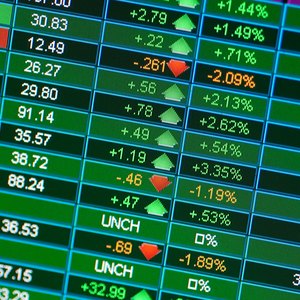
Do you ever wonder about the pip stock meaning whenever you hear investors discussing forex or stock market pips? It’s one of those terms that you should learn because you never know when you will need the knowledge.
What Does Pip in Stock Trading Mean?
To put it simply, pip is an acronym for percentage in point. Within the forex investment world, it refers to the smallest price move (standardized) that a currency quote can change by.
Pips represent one-hundredth of a percent. It is also known as one basis point. So, a change from 1.6000 to 1.6001 represents a single pip. But Japanese Yen pairs tend to have two decimal points, instead of four. So, that’s worth remembering.
Typically, forex traders tend to use pips to calculate the bid and ask price spreads of the currency pairs they are comparing to determine their position’s profit or loss.
While the term is commonly used for forex trading, if you are a stock market investor, you should also learn it even though the stock market insiders rarely use it due to its very small value. That way, if your investment interests change, you will have some insight into what’s going on within the forex markets.
How Do Pips Work?
Pips can work positively or negatively to help you either make a profit or loss.
Before you calculate how much money you can make or you have lost due to pip changes, you need to determine the value of each pip.
1. Understanding Lots
A lot is usually 100,000 units of the base currency, which is what a trader can trade at any given time. A micro lot represents 1,000 units, while a mini lot represents 10,000 of the same currency. Therefore, the pip value partly depends on the lot size.
In addition, it depends on the currency pair and its exchange rate.
2. Pip Value Formula
Generally, you can obtain the pip value by dividing one-hundredth of a percent (0.0001) by the current market value of the currency pair. And then, you can multiply the result by the lot size.
3. Pip Value Formula Example
Suppose the EUR/USD pair is currently trading at 1.1150 and you have a mini lot of 10,000. In that case, each pip will have a value of ((0.0001/1.1150) * 10,000), which equals 0.8969 Euros. Therefore, each time there is a pip change you would lose or gain approximately $0.8969 Euros.
So, if your currency pair changes from 1.1150 to 1.1155, it results in five pip moves. And your total pip value would be EUR 4.4843.
On the other hand, if you had a lot of 100,000 for the same currency pair, each pip value would be EUR 8.9686. And five pips would be worth EUR 44.8430. So, for every trade that resulted in that positive change of five basis points, you would make a profit of close to EUR 45.
What Happens When The USD Is the Second Currency?
When the USD is the second currency in a pair or the quote currency, then the smallest pip in a micro lot (0.01 or 1000 units) represents 0.0001* 1000, which is $0.1. That is the same as 10 cents. In a mini lot, each pip will be one dollar, while in a lot each pip will be $10.
Based on the example above, one pip would be equal to one dollar, and five pips would be equal to five dollars if your lot size was a mini lot (10,000 units). On the other hand, you would make $10 for each pip move and $50 for five pips if you traded one lot (100,000 units) each time.
Granted, you don’t need to learn so much about pips in stock trading because they represent minute changes. But if you are an adventurous investor, that knowledge will come in handy the day you decide to venture into forex trading to diversify your portfolio.
References
Writer Bio
I hold a BS in Computer Science and have been a freelance writer since 2011. When I am not writing, I enjoy reading, watching cooking and lifestyle shows, and fantasizing about world travels.

